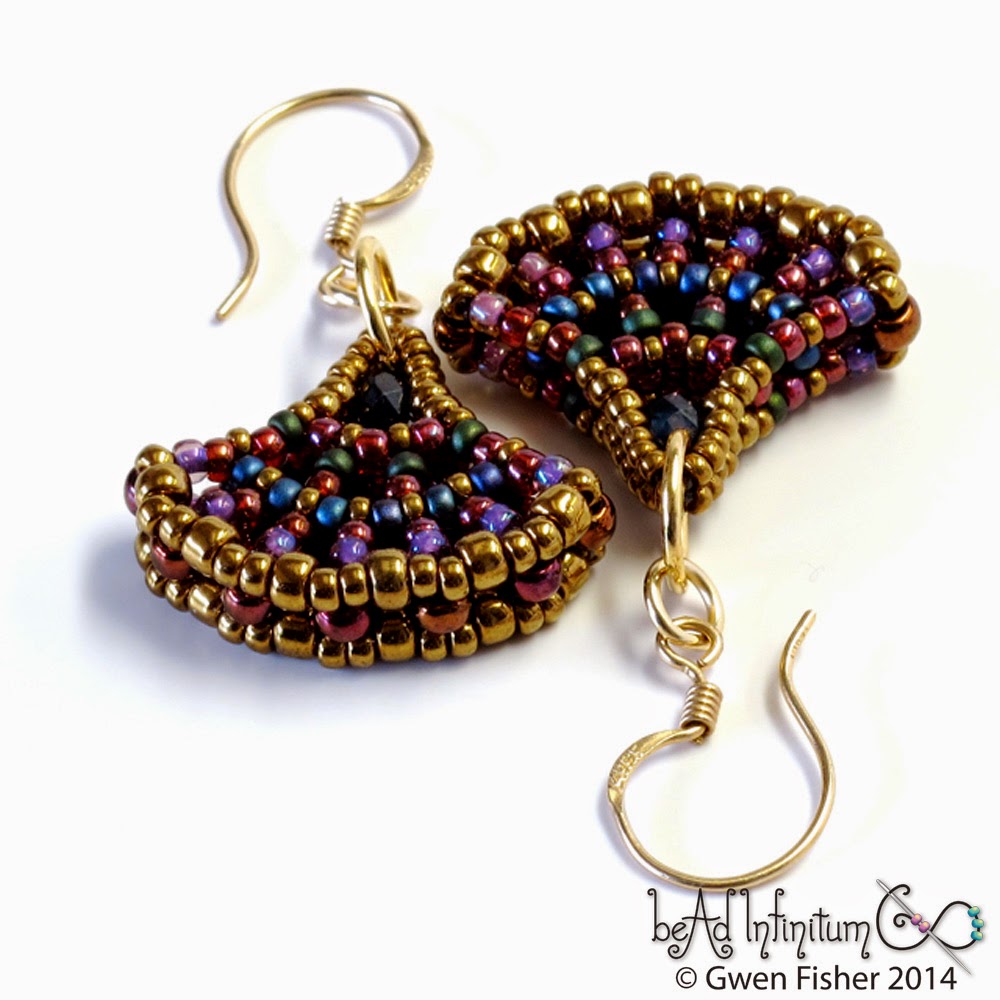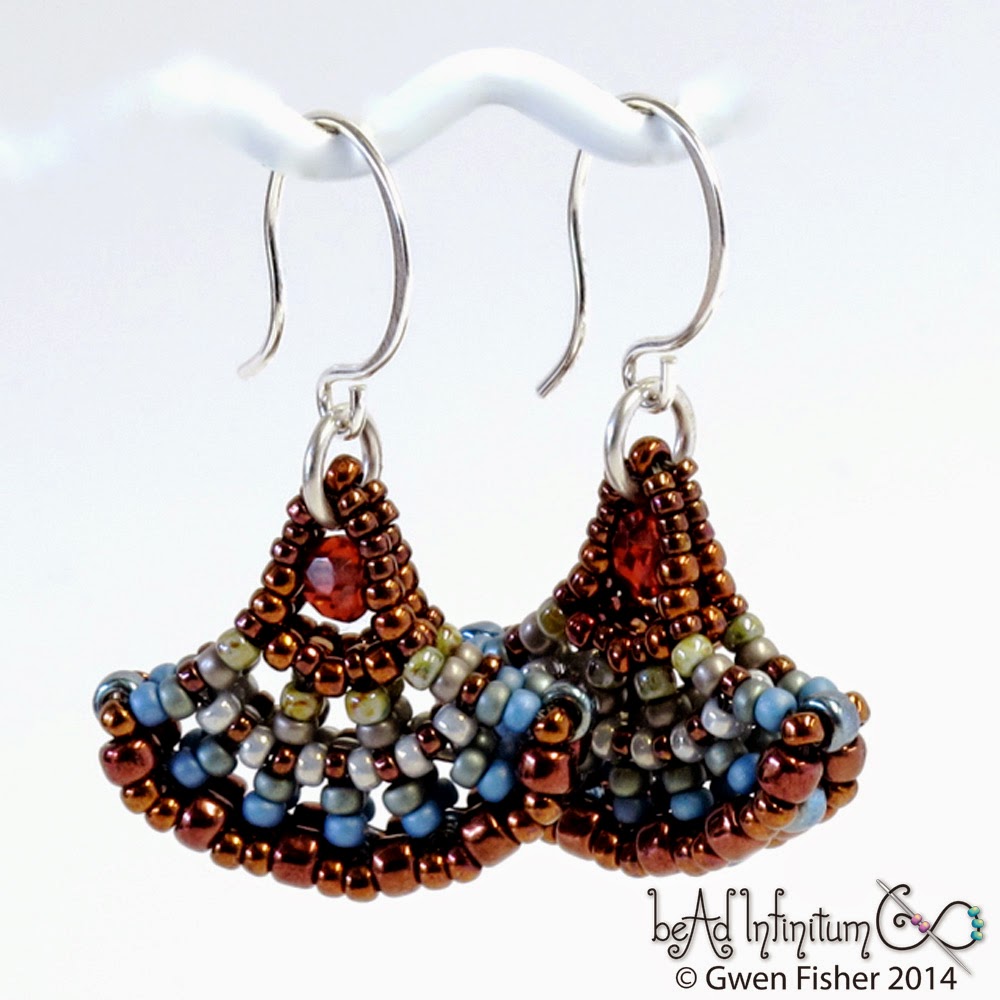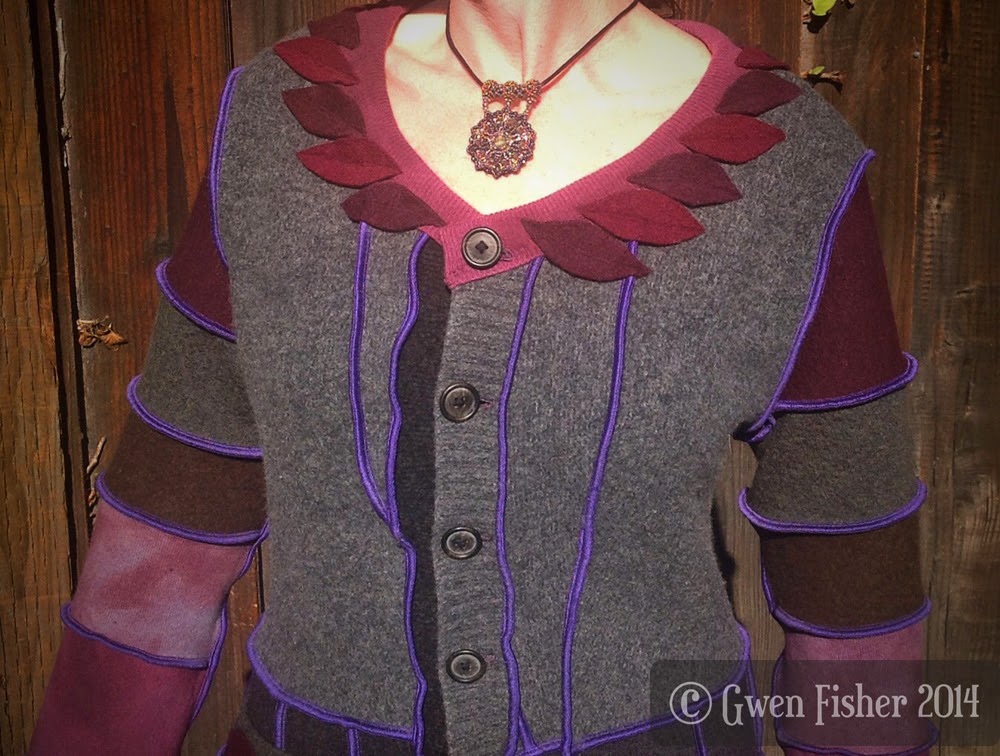For the last couple months, I've been working on some new variations of Cellini Spiral.
With nothing more than seed beads and thread, you can learn to make bracelets, pendants, and beaded beads using my new tutorial, Snail Shells and Twisty Bits.
Like the popular Slugs in Love beaded pendants, Snail Shells and Twisty Bits are my original variations on the common Cellini spiral, combining peyote stitch, increases, and decrease.
This tutorial teaches you several different techniques that you can use to make all the designs shown here, or you can combine them in new ways to design your own beaded jewelry.
This tutorial is designed for beaders who already know how to bead weave Cellini Spiral and join two ends. If you would like to learn these techniques, I recommend this free video by Jill Wiseman:
The pattern for Snail Shells and Twisty Bits is
suitable for intermediate bead weavers, with enough design possibilities
to entertain advanced bead weavers. You can make lots of different
designs, all with just seed beads and thread. No fancy shapes required.
The tutorial is a whopping 26 pages, with over 120 full color illustrations and photographs, making it one of my longest beading tutorials I've ever written. I was very tempted to break it into two separate tutorials, limiting each to one main project with a variation or two, but I made 8 different designs all using the same techniques, and I can imagine at least as many more. By keeping it whole, I found that I could teach a bunch of different techniques that work together. That way, you beaders can combine the techniques to make your own designs for pendants, bracelets, and beaded beads. The tutorial gives highly detailed instructions for every step in the necklaces and bracelet, and then I show you large photos and give charts and commentary to help you build increasingly larger spirals and more complex pieces using the same techniques. It's both a project tutorial and a technique tutorial. So, ask yourself, do you love Cellini spiral? If so, then you will really enjoy Snail Shells and Twisty Bits.
Thanks for looking!
With nothing more than seed beads and thread, you can learn to make bracelets, pendants, and beaded beads using my new tutorial, Snail Shells and Twisty Bits.
Like the popular Slugs in Love beaded pendants, Snail Shells and Twisty Bits are my original variations on the common Cellini spiral, combining peyote stitch, increases, and decrease.
This tutorial teaches you several different techniques that you can use to make all the designs shown here, or you can combine them in new ways to design your own beaded jewelry.
This tutorial is designed for beaders who already know how to bead weave Cellini Spiral and join two ends. If you would like to learn these techniques, I recommend this free video by Jill Wiseman:
The tutorial is a whopping 26 pages, with over 120 full color illustrations and photographs, making it one of my longest beading tutorials I've ever written. I was very tempted to break it into two separate tutorials, limiting each to one main project with a variation or two, but I made 8 different designs all using the same techniques, and I can imagine at least as many more. By keeping it whole, I found that I could teach a bunch of different techniques that work together. That way, you beaders can combine the techniques to make your own designs for pendants, bracelets, and beaded beads. The tutorial gives highly detailed instructions for every step in the necklaces and bracelet, and then I show you large photos and give charts and commentary to help you build increasingly larger spirals and more complex pieces using the same techniques. It's both a project tutorial and a technique tutorial. So, ask yourself, do you love Cellini spiral? If so, then you will really enjoy Snail Shells and Twisty Bits.
Thanks for looking!















































